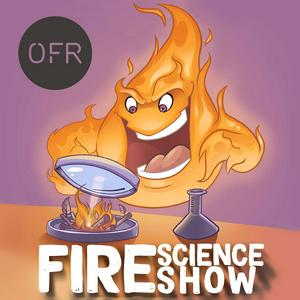200 - Façade flammability across scales and standards with Guillermo Rein and Matt Bonner
Episode 200! And for this special episode, I've travelled to London to interview Prof. Guillermo Rein and Dr Matt Bonner on a piece of research carried out at Imperial College London, with the experiments performed in our laboratory at the ITB.In this episode, we discuss the concept of flammability of the building facades and how this flammability is assessed with different testing methods available in the world. You could argue that every country has their own method, and in some cases, they use those methods even with varying criteria of acceptance. Even though the methods are as different as they can be, they all claim they test for fire safety of the external façade and are used as the basis for local regulatory regimes. Knowing that so many methods exist, we approached this with a question: Will they agree on ranking different facades? Will they show us the same results, or will each show us something else? And this question is inspired by Prof. Howard Emmons, who in 1968 went into a similar endeavour with building materials. Back then, Emmons said:“Such profound disagreement between serious attempts to measure combustibility points out better than any argument that we really don’t know what we are talking about when we say, ‘this is more combustible than that’; ‘this is a more safe building material than that’”.In this podcast episode, we discuss a series of 25 experiments: testing five facades, two ETICS and three rainscreen facades with a varying degree of use of combustible materials. All the material combinations were built by us in the same way, and then assessed using five test standards: The Polish method PN-B-02867, The international screening method ISO 13785-1 (smaller corner configuration), The German method DIN 4102-20, The American method NFPA 285, also used globallyand the British BS 8414, also highly influential over the world and the basis for the new harmonised EU approach.We go into the background and rationale of the experiments, an overview of the testing methods as well as into qualitative and quantitative findings of the study.Once the paper is published, I will update the shownotes with a link here :)For now, you may also want to revisit previous episodes of Fire Science Show discussing the fire safety of facades – It all started with episode 4 with Matt Bonner: https://www.firescienceshow.com/004-facade-fires-and-ai-with-matt-bonner/An overview of current Issues with Eleni Asimakopoulou: https://www.firescienceshow.com/124-advancements-in-fire-safety-of-facades-with-eleni-asimakopoulou/And some interesting facts about SBI method with Rudolf van Mierlo (and their development of façade testing method): https://www.firescienceshow.com/140-development-and-implementation-of-the-sbi-test-with-rudolf-van-mierlo/This research was funded by The Berkeley Group. The experimental part was performed at the Building Research Institute ITB, with a group of tests with the Polish method performed as part of our statutory research NZP-130.Thank you for being with the Fire Science Show for 200 episodes! Huge shoutout to the OFR for enabling this project and allowing me to share insights like this with all of you in an open-access repository!!!----The Fire Science Show is produced by the Fire Science Media in collaboration with OFR Consultants. Thank you to the podcast sponsor for their continuous support towards our mission.
